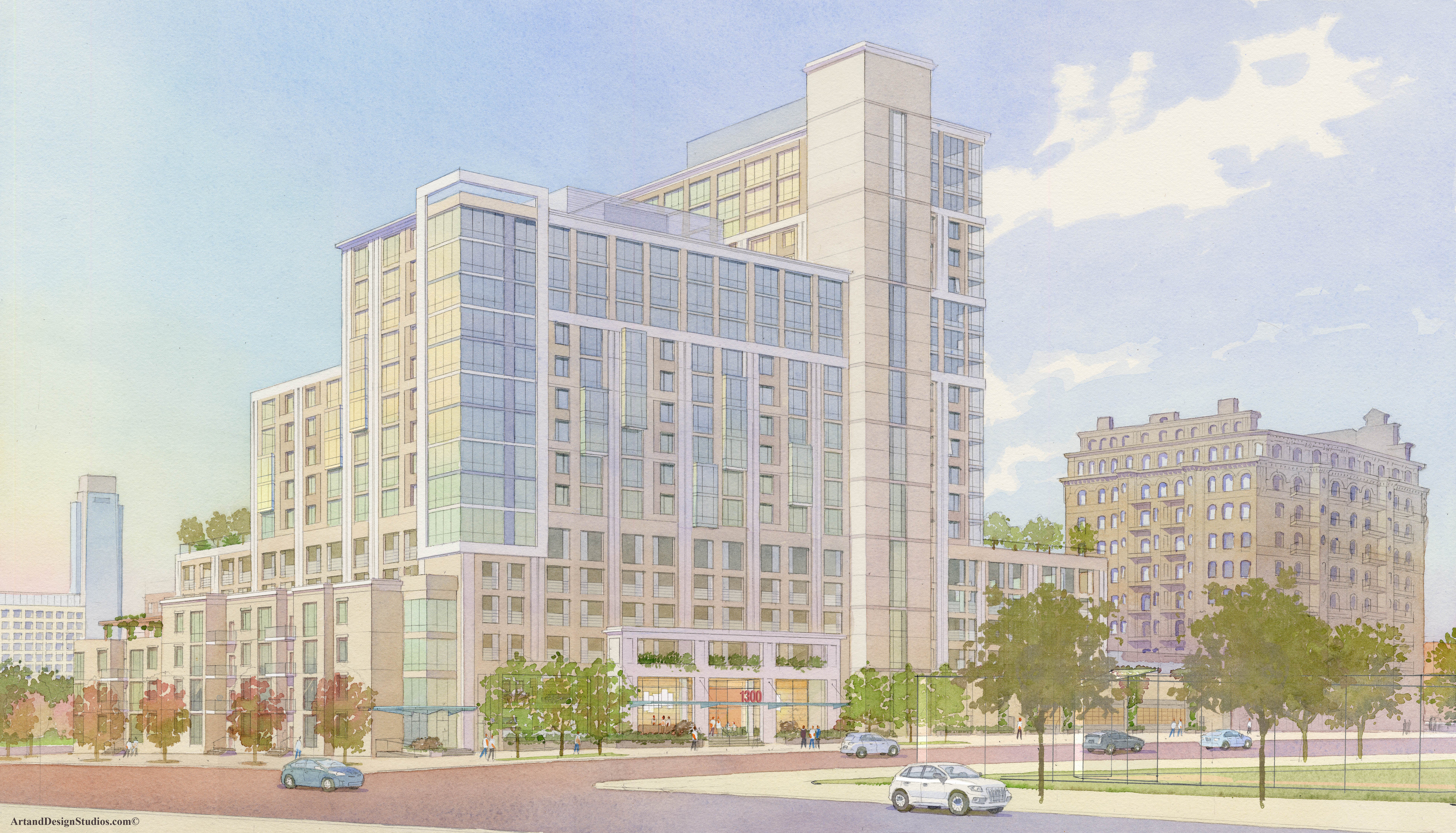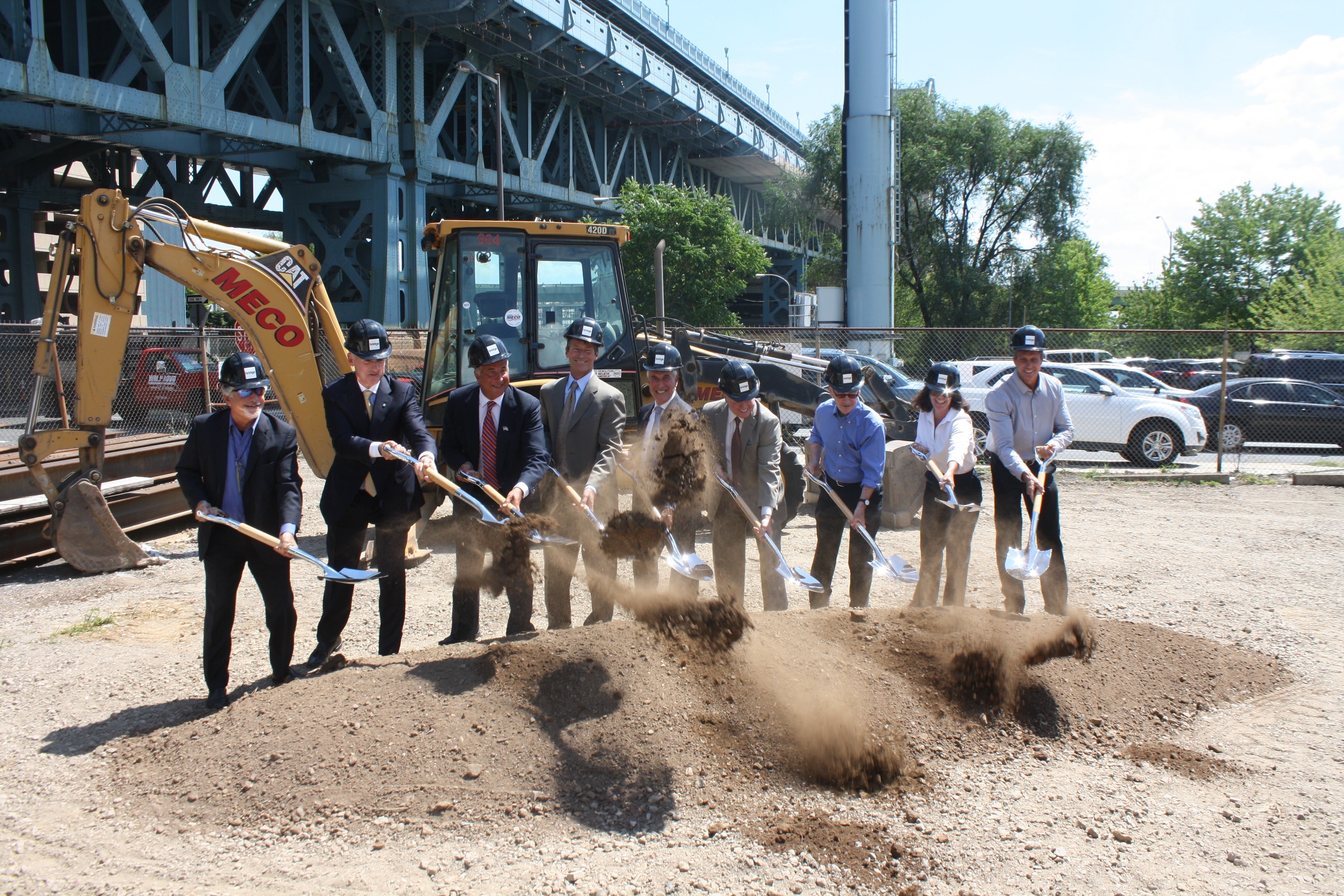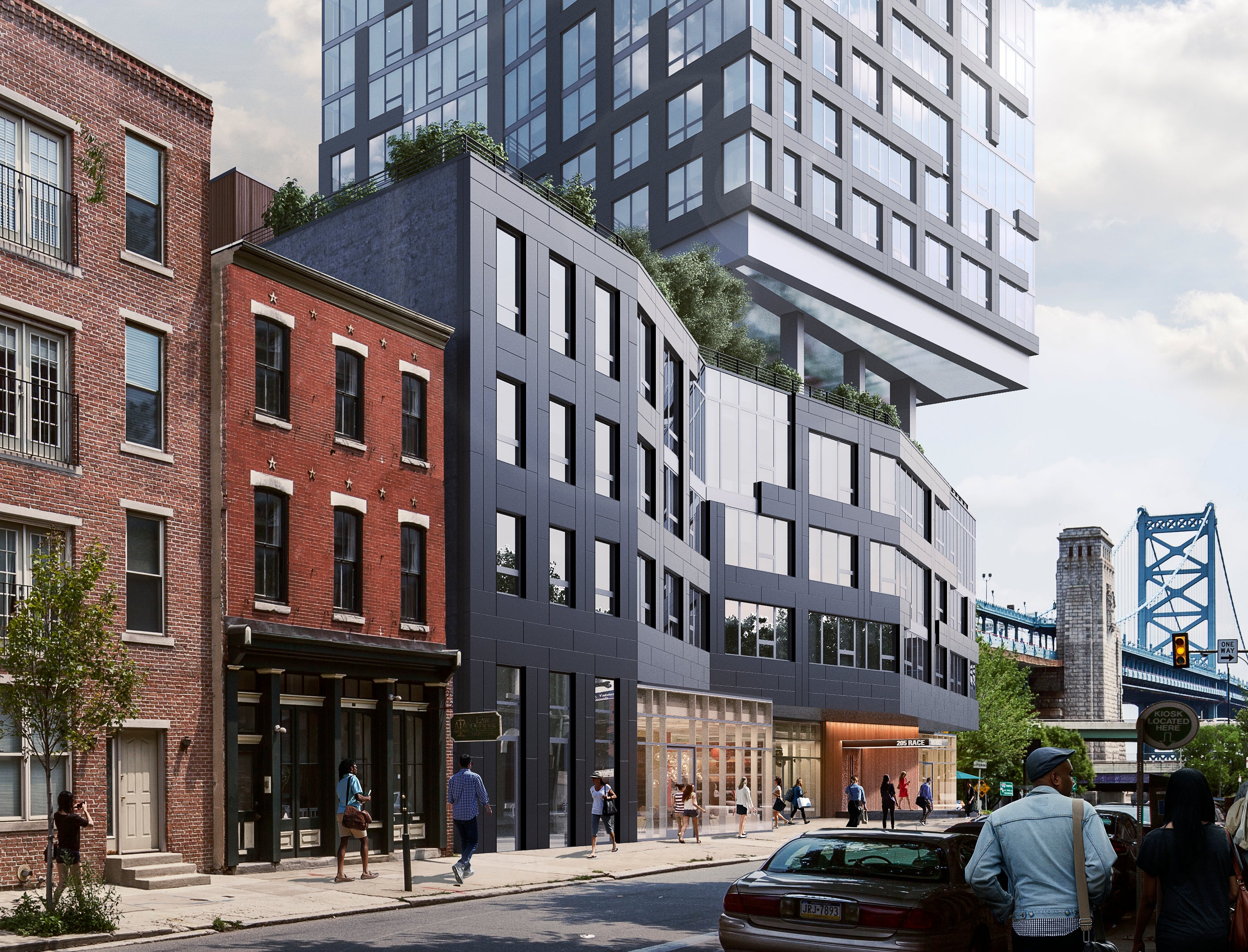Holes in the ground, cranes in the sky: notable projects of 2015

2015 was a boom year for development in Philadelphia. Such a boom year that Alan Greenberger, the deputy mayor for economic development who’s been credited for much of the building momentum and blamed for some major demolitions, said he’s never seen anything like it.
Here are six notable projects that made some progress this year.
Divine Lorraine and 1300 Fairmount
The Divine Lorraine on North Broad Street is the favorite building of just about every Philadelphian who’s seen it. For the last 15 years, it’s been sitting vacant, attracting vandals and art students. Greenberger made it his personal mission to get the old building back into use before Nutter left office.
In June, developer Eric Blumenfeld got an injection of financing from the Philadelphia Redevelopment Authority (PRA) and announced he would start work on renovations. In September, the work began. When it’s done, the former hotel will have 109 apartments, restaurants on the ground floor, and a landscaped terrace. It will also have neighbors: RAL Development Services of New York is planning to build a grocery store and nearly 500 apartments. The zoning board approved the project in October.
Logan Triangle
In September, the Redevelopment Authority announced that it had selected the Goldenberg Group to redevelop the long-vacant Logan Triangle, a 40-acre expanse of grass and weeds in North Philadelphia. The Triangle was once built out with hundreds of houses, but the ground was too soft, and the homes began to sink and crack. PRA eventually acquired all the properties through eminent domain, but hasn’t been able to do anything with the site for decades.
“First of all, I want to say I know the city has been absent for too long,” said PRA director Brian Abernathy at a community meeting in September. “I know we haven’t served your community well over the last 30 years, and I apologize for that.”
The Goldenberg Group has built big-box stores in South and West Philadelphia. In the 1990s it failed to execute a plan to bring a DisneyQuest center to what is now a surface parking lot at 8th and Market streets. Earlier this month, the Inquirer reported that a nonprofit group is hoping to raise $25 million to develop a youth sports complex on a portion of the Logan Triangle. Earlier in the year, a group called Logan Orchard and Market had pursued its own vision for the site, including urban agriculture, a health clinic, and housing.
Despite the announcement, there’s still no specific plan for the Logan Triangle site.
205 Race Street
In the scheme of things, the project that’s now being built at the corner of 2nd and Race streets in Old City isn’t the most transformational development the city has seen this year. But it sure took a long time to get off the ground.
Developers Greg Hill and Jeff Brown presented a plan develop the vacant lot back in 2012, but some members of the Old City Civic Association didn’t like the height. Additionally, billboard mogul Dominick Cipollini apparently threatened to gum up the works out of fear that the new building would block views of his three-sided sign that stands across the street and pays him every time you look at it, which, because of its placement, you are forced to do. Eventually, Brown Hill dropped that plan, and City Council adopted a bill creating a new zoning overlay for the area surrounding the bridge, written with the 205 Race project in mind.
The developers came back with a redesigned plan in 2014, and in August, they broke ground on the project, which will contain around 150 apartments and retail space surrounding the ground floor. The building was re-designed so that the billboard across the street wouldn’t lose any money for its owners.
Townhomes at Mt. Sinai Hospital
Mt. Sinai was among a number of notable buildings to get the ax this year. Early this year, the owners pulled a permit to demolish the century-old hospital, which was sitting vacant on the borderline between Pennsport and Dickinson Square West. The Concordia Group, of Maryland, plans to build out the block with townhouses, each of which will have at least one parking space. It’s a project that has drawn a mixed reaction from neighbors.
In August, the Civic Design Review (CDR) Committee asked the developers to make some design changes, with Committee member Cecil Baker describing the project as “supremely ungenerous.” The developers made some design tweaks and finished up the CDR process in September. They began demolition shortly thereafter. The Concordia Group has projects in the works at a number of closed Philadelphia public schools as well.
500 Walnut and One Riverside
“They want New York,” said architect Cecil Baker at a Historical Commission meeting last fall, referring to the potential tenants of the 26-story glass tower that’s currently under construction at 5th and Walnut streets. The project is being developed by Tom Scannapieco, who specializes in “ultra-luxury” buildings. It’s the first condominium project to break ground since 2007, according to the Inquirer.
But it’s not the last: developer Carl Dranoff broke ground over the summer on One Riverside, a project which was initially planned as apartments but later wound up being 82 luxury condos. It’s New York they want, I guess. Luckily there aren’t too many of them, yet.
University City High School
University City High School was demolished this year, but plans for a project to replace it are still in the works. In 2014, the huge property the school occupied was rezoned to make way for a new development from Drexel University and Wexford Development. The rezoning was held by Councilwoman Jannie Blackwell while the developers signed a Community Benefits Agreement with some local civic associations. Shortly after it was adopted, Drexel announced it would spend $1 billion to redevelop the site with housing, retail space, offices, and potentially a public school.
As part of the redevelopment, the University City Science Center will double in size. Steve Tang, the Science Center’s CEO, told Technical.ly that the developers are hoping to learn from the demolish-and-displace tendencies of local universities in the past. For a look at some of the ugly practices that created University City, take a look at this piece from Inquirer architecture critic Inga Saffron.
WHYY is your source for fact-based, in-depth journalism and information. As a nonprofit organization, we rely on financial support from readers like you. Please give today.








